
Maria Eleonora of Brandenburg was Queen of Sweden from 1620 to 1632 as the wife of King Gustav II Adolph. She was born a German princess as the daughter of John Sigismund, Elector of Brandenburg, and Anna, Duchess of Prussia, daughter of Albert Frederick, Duke of Prussia.

Ulrika Eleonora or Ulrica Eleanor, known as Ulrika Eleonora the Younger, reigned as Queen of Sweden from 5 December 1718 until her abdication on 29 February 1720 in favour of her husband Frederick. Following her husband's accession as King Frederick I, Ulrika Eleonora served as his queen consort until her death in 1741.
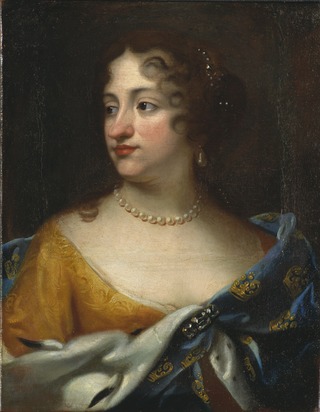
Ulrika Eleonora of Denmark was Queen of Sweden as the wife of King Charles XI. She is often admired for her generosity and charity.

The Catholic Church in Sweden is part of the worldwide Catholic Church in communion with the Pope in Rome. It was established by Archbishop Ansgar in Birka in 829, and further developed by the Christianization of Sweden in the 9th century. King Olof Skötkonung is considered the first Christian king of Sweden.

Catherine Jagiellon was a Polish - Lithuanian Commonwealth princess and Queen of Sweden from 1569 as the wife of King John III. Catherine had significant influence over state affairs during the reign of her spouse. She negotiated with the pope to introduce Counter-Reformation in Sweden. She was the mother of Sigismund, King of Poland (1587-1632) and Sweden (1592-1599).
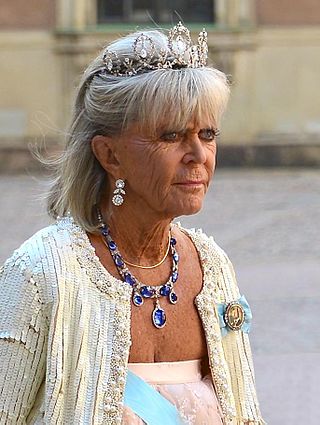
Princess Birgitta of Sweden is a member of the Swedish royal family. She is the second child of Prince Gustaf Adolf, Duke of Västerbotten, and Princess Sibylla of Saxe-Coburg and Gotha, and an elder sister of King Carl XVI Gustaf.

Joséphine of Leuchtenberg, also Josefina, was Queen of Sweden and Norway from 8 March 1844 to 8 July 1859 as the wife of King Oscar I. She was also Princess of Bologna from birth and Duchess of Galliera from 1813. She was regarded as politically active during the reign of her spouse and acted as his political adviser, actively participating in government affairs. She is acknowledged as having introduced more liberal laws regarding religion.

Hedwig Eleonora of Holstein-Gottorp was Queen of Sweden from 1654 until 1660 as the wife of King Charles X Gustav. She served as regent during the minority of her son, King Charles XI, from 1660 until 1672, and during the minority of her grandson, King Charles XII, in 1697. She also represented Charles XII during his absence in the Great Northern War from 1700 until the regency of her granddaughter Ulrika Eleonora in 1713. Hedwig Eleonora was described as a dominant personality, and was regarded as the de facto first lady of the royal court for 61 years, from 1654 until her death.

Sophie Amalie of Brunswick-Calenberg was Queen of Denmark and Norway as the consort of the King Frederick III of Denmark. She is known for her political influence, as well as for her cultural impact: she acted as the adviser of her husband, and introduced ballet and opera to Denmark.
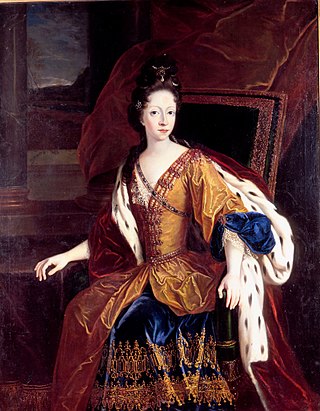
Princess Sophia Hedwig of Denmark and Norway was a Danish princess, the daughter of King Christian V and his queen-consort, Charlotte Amalie of Hesse-Kassel.

Eleonora Gonzaga, was by birth Princess of Mantua, Nevers and Rethel from the Nevers branch of the House of Gonzaga and was Holy Roman Empress, German Queen, Queen consort of Hungary and Bohemia by marriage to Emperor Ferdinand III.

Countess Catherine Opalińska, was by birth member of House of Opaliński, Queen consort of the Polish–Lithuanian Commonwealth twice and Duchess consort of Lorraine through her marriage with Stanisław I of Poland.
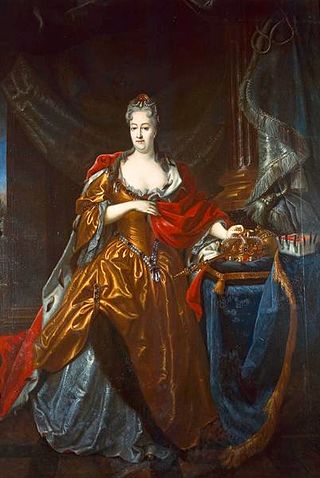
Christiane Eberhardine of Brandenburg-Bayreuth was Electress of Saxony from 1694 to 1727 and Queen Consort of the Polish–Lithuanian Commonwealth from 1697 to 1727 by marriage to Augustus II the Strong. Not once throughout the whole of her thirty-year queenship did she set foot in Poland, instead living in Saxony in self-imposed exile. Born a German margravine, she was called Sachsens Betsäule, "Saxony's pillar of prayer", by her Protestant subjects for her refusal to convert to Catholicism. Despite the allegiance of Christiane Eberhardine and her mother-in-law, Anna Sophie of Denmark, to Lutheranism, her husband and son, later Augustus III, both became Catholics, ensuring Catholic succession in the Albertine lands after a century and a half.
Brita Sophia De la Gardie was a Swedish noble and amateur actress who later converted to Catholicism and became a nun. She was a central member of the cultural life in Stockholm in her time. She played a part in the history of Swedish theatre. She was the maternal aunt of Count Axel von Fersen the Younger.

Countess Amalia "Emilie" Wilhelmina Lewenhaupt was a Swedish noblewoman of German descent who became known as a dilettante painter, actor, and poet.
Christina Eleonora Drakenhielm (1649–1712), was a Swedish noble and convert. Her conversion to Catholicism in 1664 was a scandal in contemporary Sweden, where the act was punishable by death.
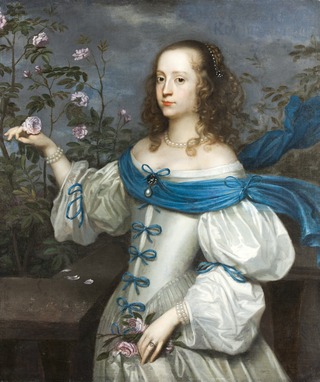
Beata Elisabet von Königsmarck (1637–1723), was a Swedish countess and landowner.
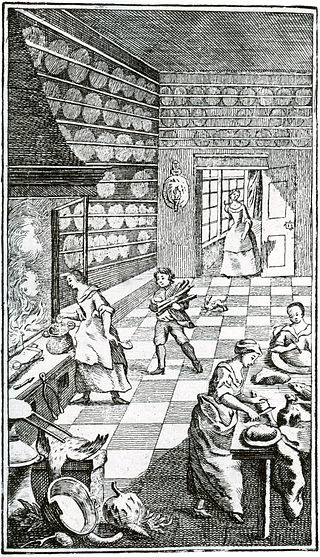
Events from the year 1755 in Sweden
Brechtgien "Birgitta" Durell, née von Crakow or von Cracauw was a Swedish industrialist.
Ulrica Eleonora Rålamb, née von Düben, was a politically active Swedish countess and socialite.















